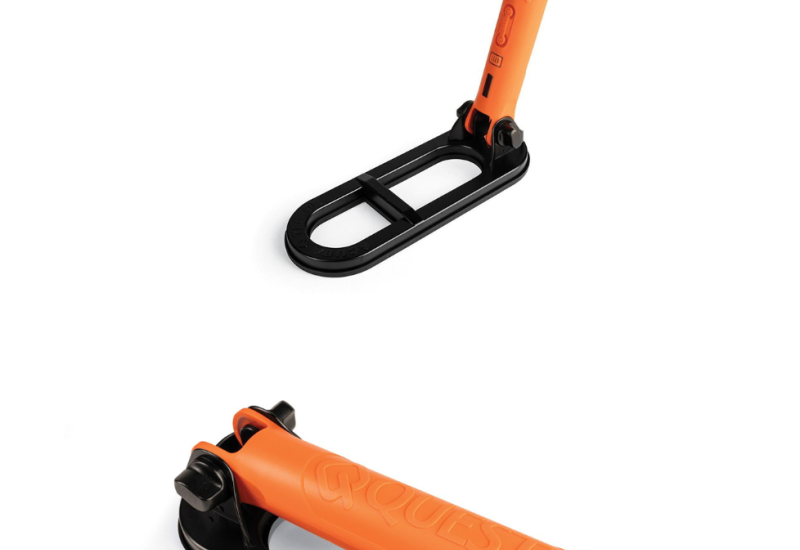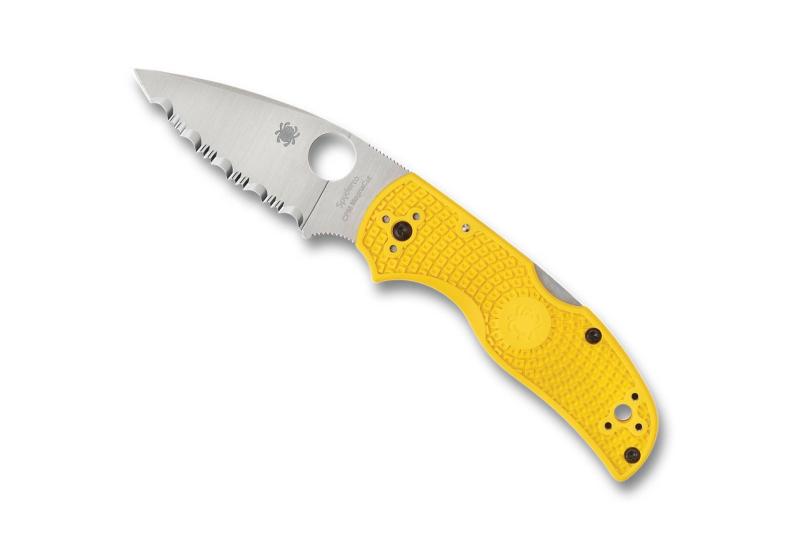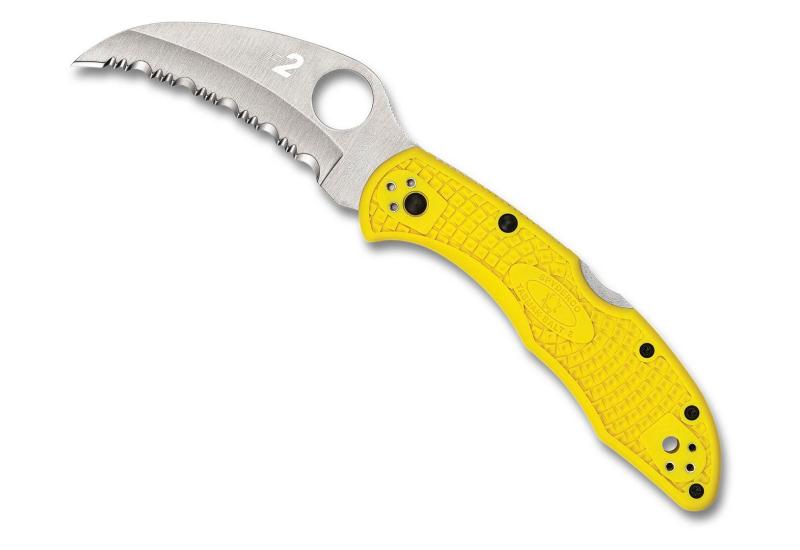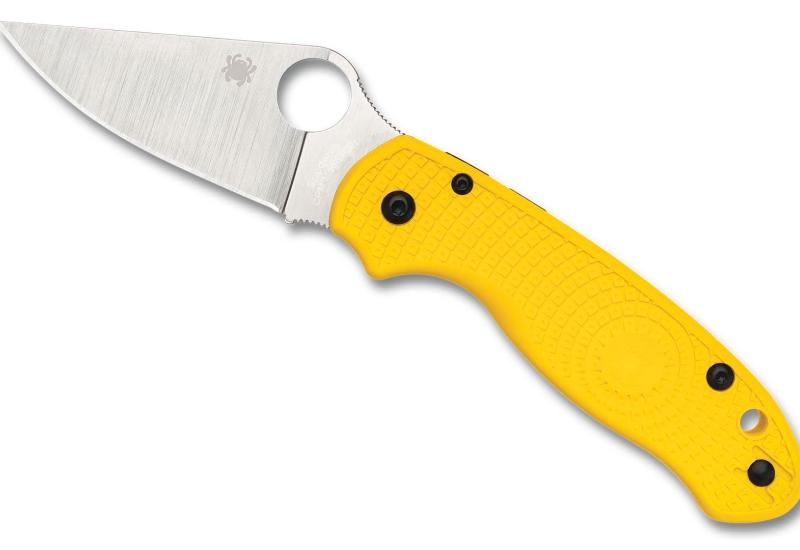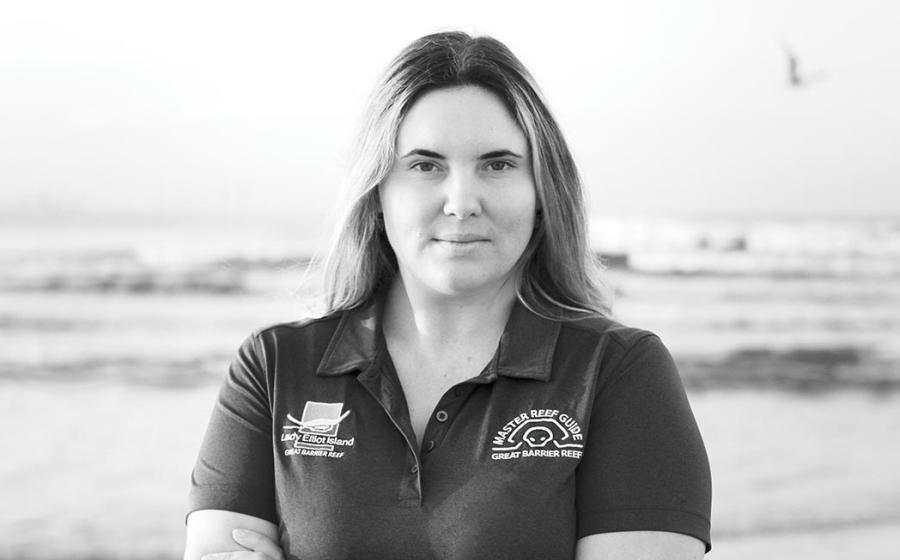Got Air?
February 2007
By Bill Kendig
| Battle of the Bottles |
 |
||
|---|
|

|
In an out-of-air emergency there are really only two things that matter-your next breath, and where it's coming from. Ask a typical recreational diver what he would do if he suddenly found himself on the bottom with an empty tank, and he'll probably mumble something about sharing air with his buddy. OK. Your tank just expired. Exactly where is your buddy? Where does he keep his octopus? Does he have enough air for the both of you? Clock's ticking.
There is another option: You could carry one of these eight redundant breathing systems. They range from ultra-compact, get-to-the-surface-now bailout bottles with integrated regulators, to small pony bottles equipped with full-sized first- and second-stage regulators. All are designed to help you get safely to the surface in an emergency, but they aren't foolproof and there's no one-size-fits-all solution (see: "How Many Breaths?" p. 75). For the purposes of this article, we define bailout bottles as small-capacity systems (6 cubic feet or less) that can easily be detached and handed off to another diver. We define pony bottles as larger-capacity systems (13 to 20 cubic feet) that remain attached to the diver.
Pros and Cons
Choosing among these systems is an exercise in trade-offs. Compact bailout bottles are easy to travel with, easy to use, easy to share and they can be stowed almost anywhere, but depending on how deep you are, may only give you just enough air to kick for the surface or to find that wayward buddy. The bigger pony bottle systems provide more options in that they may allow you to make a slower ascent, but they also take up more space on your gear, are harder to travel with and can create hydrodynamic drag.
Spare Air 170 and 300
|||
|---|---|
|

|
The Spare Air system is the original, and still the most popular, bailout bottle on the market today and it has a growing fan base of divers who claim they wouldn't be here if not for their "buddy in a bottle." The 170 and 300 offer 1.7 and 3 cubic feet of air, respectively, and come with their own compact, built-in regulators. They also come in versatile nylon holsters that mount just about anywhere on your gear, and the smaller 170 unit will even fit inside some large BC pockets. Each spare air comes with a convenient fill adapter that lets you transfer air directly from your main tank in seconds. A small stem gauge lets you know at a glance if the unit is full or empty. Of the systems covered in this roundup, the Spare Airs are the easiest to fill, stow, travel with and use. For fastest deployment, we prefer mounting the units upright and in-line with the right BC chest strap. A large plastic D-ring at the base of the holster's velcro closure is easy to recognize by feel. Grab it, lift the cover and pull the unit free. Spare Air units are always on, so just put it in your mouth, hit the top-positioned purge button and start breathing. You can also pass the unit to another diver in need.
The built-in regulator can handle the pressure of recreational dive depths, but its breathing resistance is naturally going to be greater than that of a traditional regulator. The other trade-off for the convenient size of either Spare Air is capacity. The systems are designed to give you a few more breaths to get to the surface in an emergency, and depending on your depth and your breathing rate, may not give you time to ascend as slowly as you would like. Based on our experience with the units and our conservative air consumption calculations, we prefer the larger Spare Air 300 over the 170 unless you dive exclusively in very shallow water. Price: $299 for either size; $320 for the 300 nitrox-ready units. Contact: www.spareair.com.
H2Odyssey EAS2
|||
|---|---|
|

|
H2Odyssey sent us two units employing the company's EAS2 tank valve/regulator system. It threads into any standard tank neck, and the built-in piston first stage connects to a traditional second-stage regulator with a short, multi-directional swivel instead of a hose. There's a high-pressure port that can be fitted with an optional pressure gauge, a low-pressure port for accessories and a large red on/off knob that's easy to find and operate (though you should dive with any bailout system pressurized for faster deployment). For use as a bailout bottle, H2Odyssey sells the EAS2 attached to either a 4- or 6-cubic-foot aluminum cylinder. Both systems come in an extremely functional quick-release bag, and although they are bulkier and less streamlined than the Spare Airs, the EAS bottles can still be mounted on a BC shoulder strap. When it's time to deploy the unit, pull the red loop to open the bag and release the tank. The conventional second stage is familiar, easy to purge and breathes easily, but remember these are still bailout bottles with limited capacity. The systems come with your choice of either a yoke for filling from a standard scuba cylinder, or an air station adapter that works with compressor fill whips. Price: $339 for the 4-cubic-foot tank, $349 for the 6-cubic-foot tank. An optional pony gauge is $29. Also available in nitrox versions. Contact: www.h2odyssey.com.
Zeagle Quick Deploy Pony System
|||
|---|---|
|

|
Although this system comes rigged like a pony bottle, we've classified it as a bailout system because of its capacity (6 cubic feet) and its ability to be handed off to another diver. The small aluminum cylinder is topped with Zeagle's RaZor first stage/tank valve and a traditional Envoy second stage regulator at the end of a 36-inch hose. It comes with a rugged Quick Deploy mesh bag that has multiple mounting grommets for a variety of attachment options. We recommend mounting the system to your main tank in a valve-down orientation and clipping the Envoy to your chest with an octo holder. An adjustable bungee cord at the neck of the mesh bag keeps the tank from slipping out but will stretch if enough force is used, allowing the tank to be handed off to a grateful buddy. A pony bottle gauge confirms cylinder pressure, and the first-stage offers three low-pressure ports for accessories. The Envoy second stage was an easy breather at depth with a large front-cover purge for clearing and a dive/pre-dive switch to prevent free flows. The Zeagle Quick Deploy Pony System comes with an air station fill adapter, but you can also purchase optional fill adapters to charge the unit from a conventional scuba tank. Price (as shown): $387. Contact: www.zeagle.com.
H2Odyssey RAS1 and RAS2
|||
|---|---|
|

|
Offered with either a 13-cubic-foot or 19-cubic-foot cylinder, the RAS (Redundant Air System) comes with a tank bag that attaches securely to your main tank and BC cam bands for reduced wobble. Both systems shown here feature the RG2V tank valve/first stage, but come with different second stage regs. The RAS1 second stage (shown on the 13-cubic-foot system) has a 360-degree swivel. The RAS2 (shown on the 19-cubic-foot system) has a dive/pre-dive switch for controlling free flows. Both have 39-inch hoses. The RAS system comes with an air station fill adapter. There is also an optional yoke filler adapter for charging the unit from conventional tanks. Price: $361 for the 13-cubic-foot system; $389 for the 19-cubic-foot system. An optional pony gauge is $34. Contact: www.h2odyssey.com.
OMS Pony Bottle System
|||
|---|---|
|

|
The OMS system reflects the tech philosophy of self-sufficiency. It uses a 13-cubic-foot steel cylinder, which is slightly smaller and more negatively buoyant than aluminum tanks of the same size. Add to that the security of a DIN valve and the reliability of their workhorse Deco second-stage reg and you have a durable backup system you can trust. The OMS Pony Bottle System comes with an adjustable tank band and cam buckle that connects the system to your main tank with superior stability. The first-stage comes with a pony bottle gauge, an overpressure release valve and there is an extra low-pressure port for accessories. The Deco second-stage has a dive/pre-dive switch to prevent free flows and it also comes with black, green and yellow purge covers so you can mark it as your bailout reg. We found the reg to be an easy breather and the entire system easy to use. Price (as configured): $676.28. Contact: www.omsdive.com.
How Many Breaths?
Disaster strikes. You switch to your redundant air system and start your immediate ascent. How do you know if your system has sufficient air to get you there? How many breaths you get from any redundant air system depends, of course, on your depth, breathing rate, ascent rate and how much air the system holds. It's next to impossible to know exactly how long it will last in any given situation, but there are ways to make an informed guess.
Use it. If you own a bailout system, you can get a better feel for its capabilities by using it on normal ascents to your safety stop from various depths; just take the right precautions and be sure to let your buddy and the divemaster know what you're up to before the dive begins. (Bonus: Practice also means you'll be more familiar with deploying the system, which could be invaluable in an emergency.) Have plenty of air in your primary cylinder and keep your primary second stage close at hand. Always ascend in a controlled, relaxed manner and have your buddy help monitor your ascent rate-you're not simulating an emergency ascent, just getting some hands-on practice. It's best to start these practice runs shallow and if you have air left, start slightly deeper on future test runs. One caveat: If practicing a new set of skills on a new piece of equipment during the trickiest part of your dive sounds like too much task-loading, first practice your ascent procedure by swimming horizontally in a pool.
Get a Pony Gauge. An optional pony bottle gauge will allow you to monitor tank pressure.
Do the Math. You can make a ballpark estimate of how much of an air reserve you'll need to make a slow, controlled ascent on any dive using the following steps. First, calculate how much time you need to ascend from your deepest point by dividing your max depth by your preferred ascent rate. Most training agencies now recommend 30 feet per minute (fpm). Next, you need to estimate your air needs during the ascent. If you don't know your true surface consumption rate (SCR), most instructors recommend you use a rate of 1 cubic foot per minute (cfm). This is higher than normal for most people, but it's a reasonable assumption for a stressed, but still in control, diver. Take your maximum planned depth, divide by 33 and then add one to the result. Multiply that number by your SCR and you have an estimate of how much gas you'll breathe each minute at maximum depth. Multiply this number by the minutes you need to ascend and you begin to get an idea of the amount of gas you'll need.
For example: Say you're diving to a max depth of 60 feet. To ascend at a rate of 30 fpm you'll need two minutes of air (60 ft./30 fpm = 2 minutes). At an SCR of 1 cfm you will need 5.6 cubic feet of air to make that ascent (60 feet/33 + 1 = 2.8. 2.8 x 1 cfm = 2.8 cfm. And 2.8 cfm x 2 minutes = 5.6 cubic feet of air).
The Great Debate
Using these conservative assumptions, critics of redundant air systems will argue that (mathematically at least) most won't get you to the surface from 132 feet at the recommended ascent rate, and that's before you even consider a safety stop. Proponents will point to the same assumptions and argue they don't mirror the reality that many divers ascend faster than the recommended rate even in normal conditions and that countless divers have successfully used redundant air systems to rescue themselves. (To weigh in with your opinions, alternative calculations and stories of self-rescue, go to www.scubadiving.com.)
While both sides agree that some air is always better than no air, the point to consider as an informed diver is that all redundant air systems have limitations. The better you understand those limitations, the better off you'll be in choosing one to match your needs and in managing an out-of-air-emergency. It should also be obvious that these redundant air systems should never be used as "tank extenders" for divers too lazy or careless to monitor their gauges. Like a life raft or a reserve parachute, a redundant air system is great to have, but your goal should be to never need it.
InDepth
| Manufacturer / Model | ||||||||
| Spare Air 170 | Spare Air 300 | H2Odyssey EAS2 | H2Odyssey EAS2 | Zeagle Quick Deploy | H2Odyssey RAS1 | OMS Pony Bottle | H2Odyssey RAS2 | |
| Volume | 1.7 cu. ft. | 3.0 cu. ft. | 4.0 cu. ft. | 6.0 cu. ft. | 6.0 cu. ft. | 13 cu. ft. | 13 cu. ft. | 19 cu. ft. |
| Pressure Gauge | Stem | Stem | Stem | Dial | Dial | Dial | Dial | Dial |
| Number of Extra Ports | N/A | N/A | 1 LP | 1 LP | 3 LP | 1 LP | 1 LP | 1 LP |
| Filler Type | Tank | Tank | Tank of Air Station | Tank of Air Station | Air Station | Tank of Air Station | Air Station | Tank of Air Station |
| Warranty | 1-year | 1-year | 2-year | 2-year | Ltd. Lifetime | 2-year | 90 days | 2-year |
| Price | $299 | 299 ($320 nitrox) | $339 | $349 | $387 | $361 | $676.28 | $389 |
February 2007
By Bill Kendig
|| |---|
| Battle of the Bottles| |
|| |---|
|
|
There is another option: You could carry one of these eight redundant breathing systems. They range from ultra-compact, get-to-the-surface-now bailout bottles with integrated regulators, to small pony bottles equipped with full-sized first- and second-stage regulators. All are designed to help you get safely to the surface in an emergency, but they aren't foolproof and there's no one-size-fits-all solution (see: "How Many Breaths?" p. 75). For the purposes of this article, we define bailout bottles as small-capacity systems (6 cubic feet or less) that can easily be detached and handed off to another diver. We define pony bottles as larger-capacity systems (13 to 20 cubic feet) that remain attached to the diver.
Pros and Cons
Choosing among these systems is an exercise in trade-offs. Compact bailout bottles are easy to travel with, easy to use, easy to share and they can be stowed almost anywhere, but depending on how deep you are, may only give you just enough air to kick for the surface or to find that wayward buddy. The bigger pony bottle systems provide more options in that they may allow you to make a slower ascent, but they also take up more space on your gear, are harder to travel with and can create hydrodynamic drag.
Spare Air 170 and 300
||| |---|---|
|<
table>
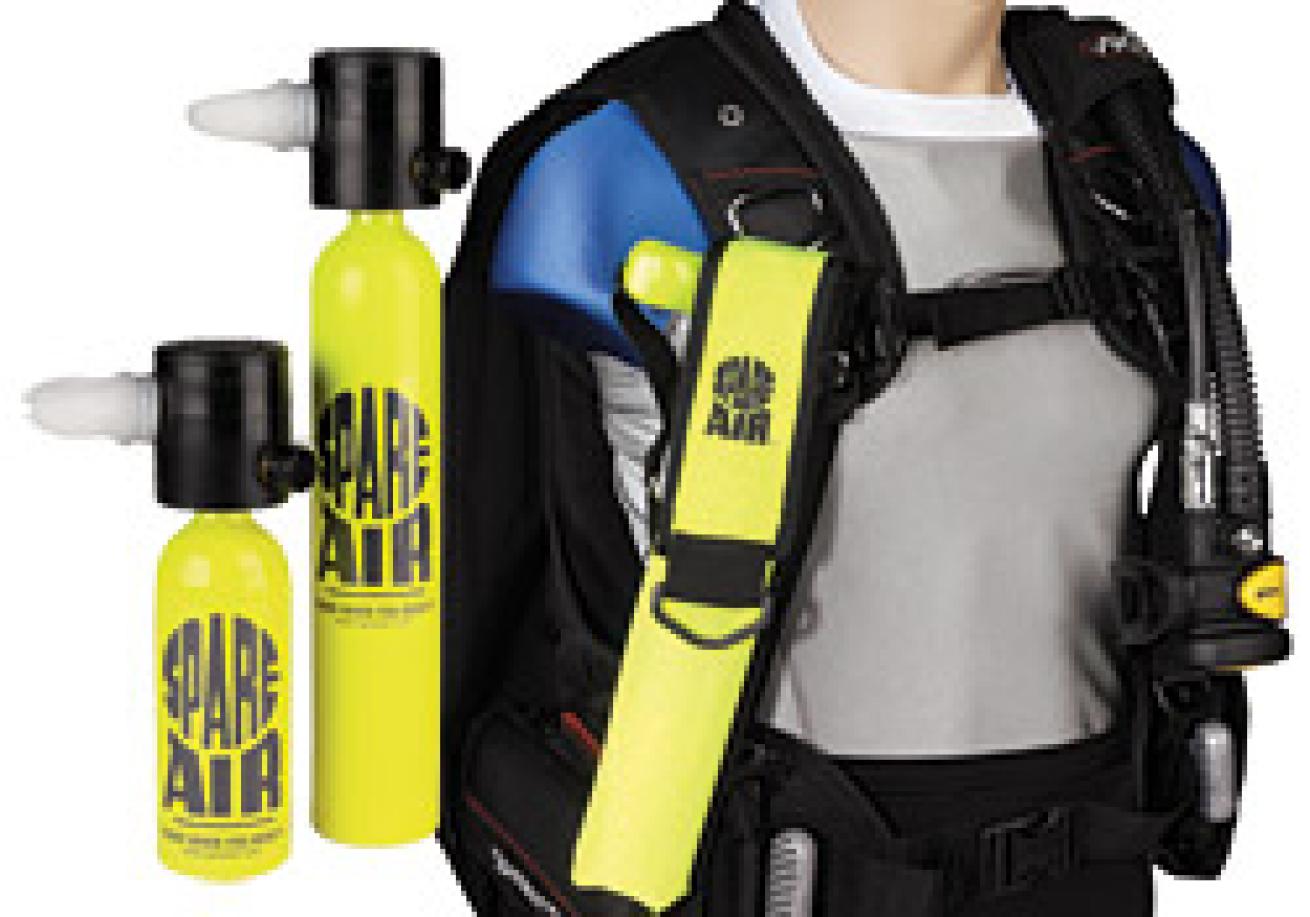
|
The built-in regulator can handle the pressure of recreational dive depths, but its breathing resistance is naturally going to be greater than that of a traditional regulator. The other trade-off for the convenient size of either Spare Air is capacity. The systems are designed to give you a few more breaths to get to the surface in an emergency, and depending on your depth and your breathing rate, may not give you time to ascend as slowly as you would like. Based on our experience with the units and our conservative air consumption calculations, we prefer the larger Spare Air 300 over the 170 unless you dive exclusively in very shallow water. Price: $299 for either size; $320 for the 300 nitrox-ready units. Contact: www.spareair.com.
H2Odyssey EAS2
||| |---|---|
|<
table>
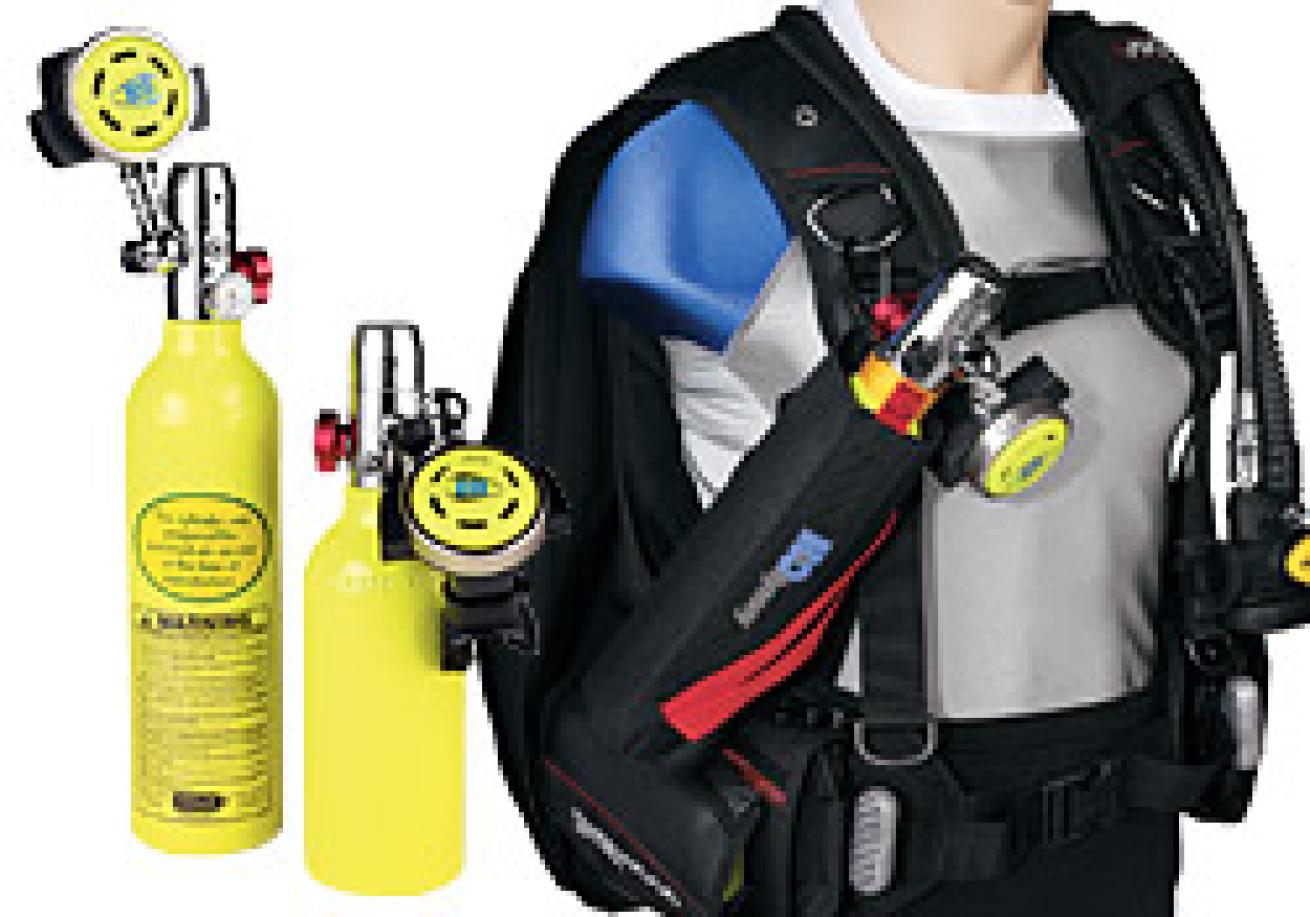
|
Zeagle Quick Deploy Pony System
||| |---|---|
|<
table>
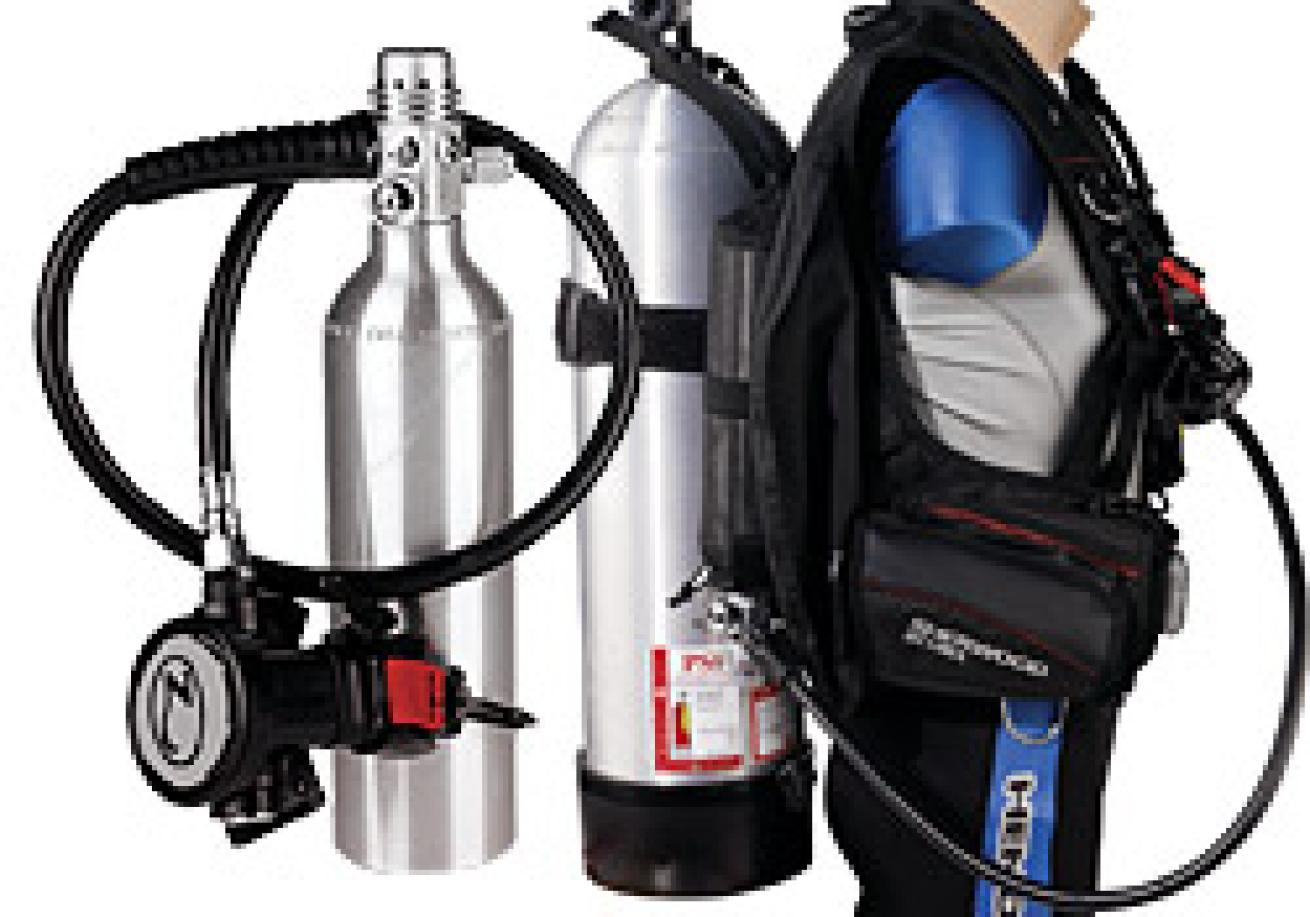
|
H2Odyssey RAS1 and RAS2
||| |---|---|
|<
table>
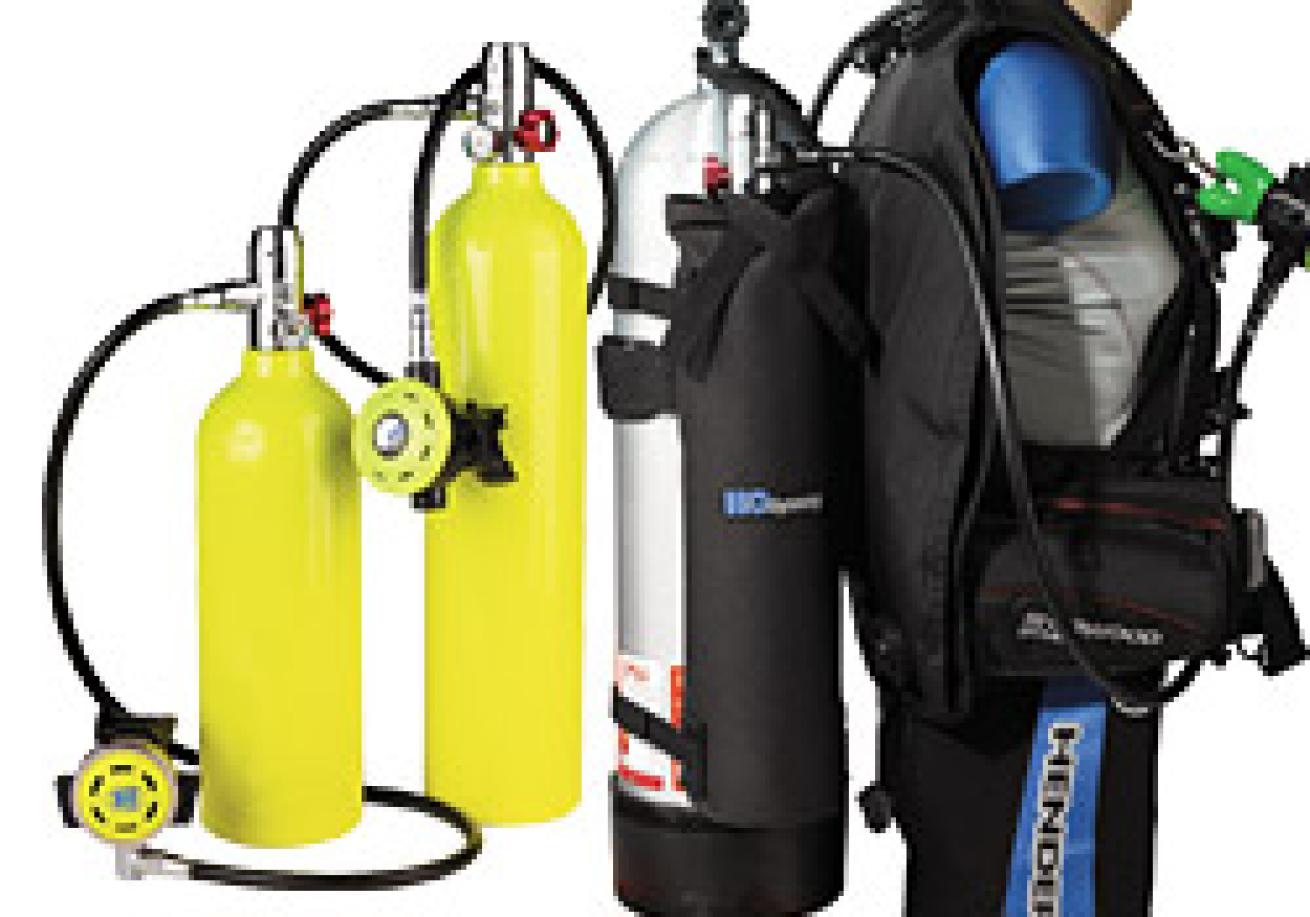
|
OMS Pony Bottle System
||| |---|---|
|<
table>
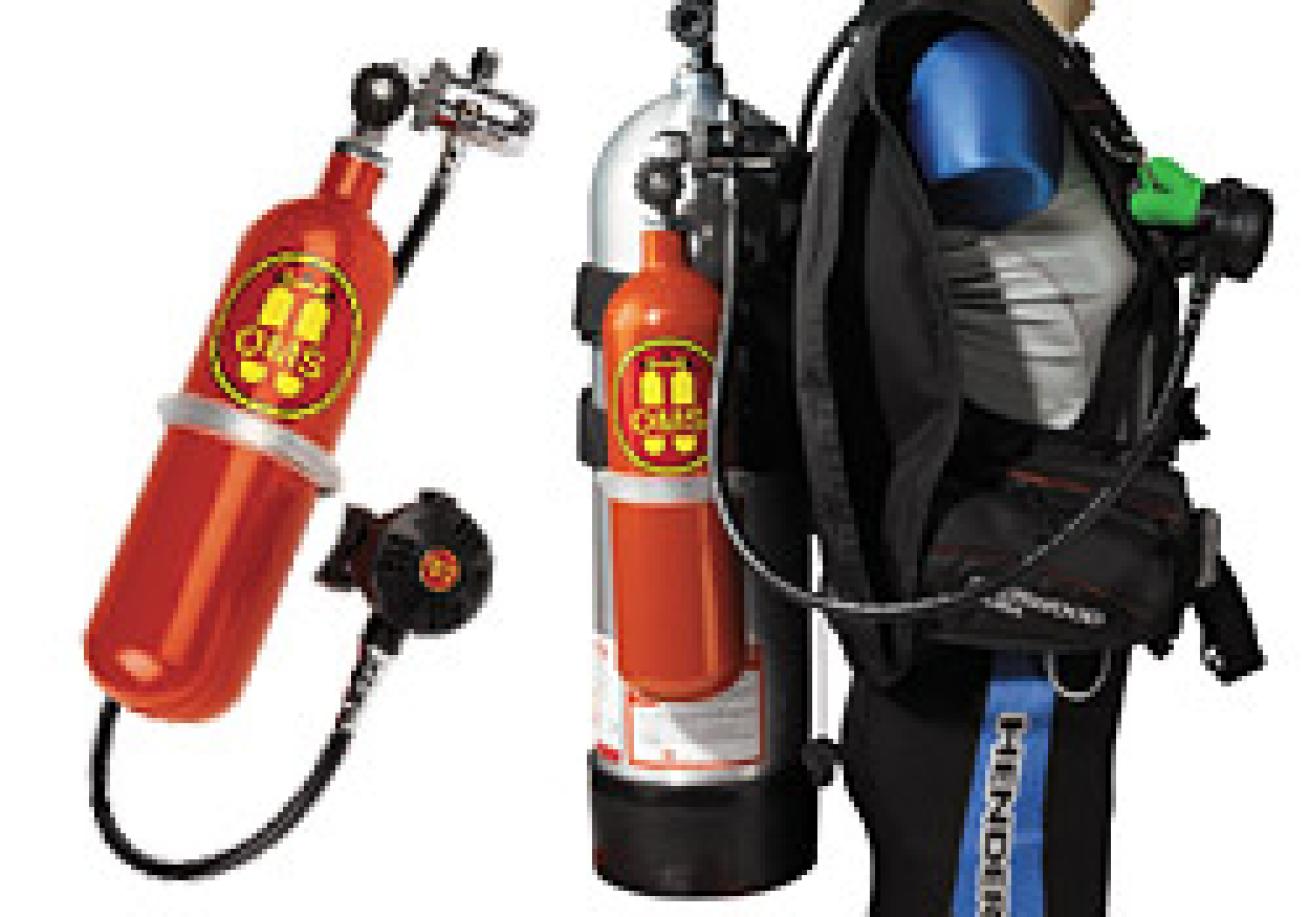
|
How Many Breaths?
Disaster strikes. You switch to your redundant air system and start your immediate ascent. How do you know if your system has sufficient air to get you there? How many breaths you get from any redundant air system depends, of course, on your depth, breathing rate, ascent rate and how much air the system holds. It's next to impossible to know exactly how long it will last in any given situation, but there are ways to make an informed guess.
Use it. If you own a bailout system, you can get a better feel for its capabilities by using it on normal ascents to your safety stop from various depths; just take the right precautions and be sure to let your buddy and the divemaster know what you're up to before the dive begins. (Bonus: Practice also means you'll be more familiar with deploying the system, which could be invaluable in an emergency.) Have plenty of air in your primary cylinder and keep your primary second stage close at hand. Always ascend in a controlled, relaxed manner and have your buddy help monitor your ascent rate-you're not simulating an emergency ascent, just getting some hands-on practice. It's best to start these practice runs shallow and if you have air left, start slightly deeper on future test runs. One caveat: If practicing a new set of skills on a new piece of equipment during the trickiest part of your dive sounds like too much task-loading, first practice your ascent procedure by swimming horizontally in a pool.
Get a Pony Gauge. An optional pony bottle gauge will allow you to monitor tank pressure.
Do the Math. You can make a ballpark estimate of how much of an air reserve you'll need to make a slow, controlled ascent on any dive using the following steps. First, calculate how much time you need to ascend from your deepest point by dividing your max depth by your preferred ascent rate. Most training agencies now recommend 30 feet per minute (fpm). Next, you need to estimate your air needs during the ascent. If you don't know your true surface consumption rate (SCR), most instructors recommend you use a rate of 1 cubic foot per minute (cfm). This is higher than normal for most people, but it's a reasonable assumption for a stressed, but still in control, diver. Take your maximum planned depth, divide by 33 and then add one to the result. Multiply that number by your SCR and you have an estimate of how much gas you'll breathe each minute at maximum depth. Multiply this number by the minutes you need to ascend and you begin to get an idea of the amount of gas you'll need.
For example: Say you're diving to a max depth of 60 feet. To ascend at a rate of 30 fpm you'll need two minutes of air (60 ft./30 fpm = 2 minutes). At an SCR of 1 cfm you will need 5.6 cubic feet of air to make that ascent (60 feet/33 + 1 = 2.8. 2.8 x 1 cfm = 2.8 cfm. And 2.8 cfm x 2 minutes = 5.6 cubic feet of air).
The Great Debate
Using these conservative assumptions, critics of redundant air systems will argue that (mathematically at least) most won't get you to the surface from 132 feet at the recommended ascent rate, and that's before you even consider a safety stop. Proponents will point to the same assumptions and argue they don't mirror the reality that many divers ascend faster than the recommended rate even in normal conditions and that countless divers have successfully used redundant air systems to rescue themselves. (To weigh in with your opinions, alternative calculations and stories of self-rescue, go to www.scubadiving.com.)
While both sides agree that some air is always better than no air, the point to consider as an informed diver is that all redundant air systems have limitations. The better you understand those limitations, the better off you'll be in choosing one to match your needs and in managing an out-of-air-emergency. It should also be obvious that these redundant air systems should never be used as "tank extenders" for divers too lazy or careless to monitor their gauges. Like a life raft or a reserve parachute, a redundant air system is great to have, but your goal should be to never need it.
InDepth
|||||||||| |---|---|---|---|---|---|---|---|---|
| | Manufacturer / Model| | | Spare Air 170| Spare Air 300| H2Odyssey EAS2| H2Odyssey EAS2| Zeagle Quick Deploy| H2Odyssey RAS1| OMS Pony Bottle| H2Odyssey RAS2| | Volume| 1.7 cu. ft.| 3.0 cu. ft.| 4.0 cu. ft.| 6.0 cu. ft.| 6.0 cu. ft.| 13 cu. ft.| 13 cu. ft.| 19 cu. ft.| | Pressure Gauge| Stem| Stem| Stem| Dial| Dial| Dial| Dial| Dial| | Number of Extra Ports| N/A| N/A| 1 LP| 1 LP| 3 LP| 1 LP| 1 LP| 1 LP| | Filler Type| Tank| Tank| Tank of Air Station| Tank of Air Station| Air Station| Tank of Air Station| Air Station| Tank of Air Station| | Warranty| 1-year| 1-year| 2-year| 2-year| Ltd. Lifetime| 2-year| 90 days| 2-year| | Price| $299| 299 ($320 nitrox)| $339| $349| $387| $361| $676.28| $389|
